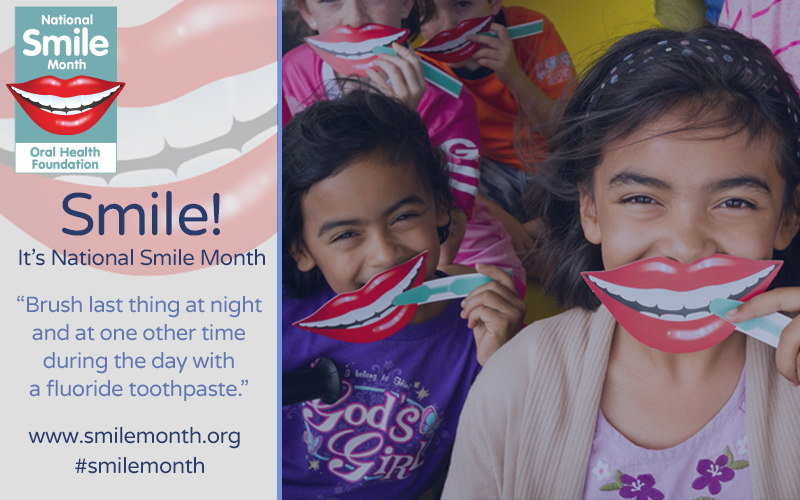
In this month’s column, Anna Middleton explains how despite not seeing patients right now, we can all still get involved with National Smile Month.
National Smile Month is run by the Oral Health Foundation. It is back to raise awareness of important oral health issues, champion the benefits of having good oral health and to promote the value of a healthy smile.
A consistent oral hygiene routine is important, but a lot of people often ignore the signs of deteriorating dental health. While practices remain closed for the next few weeks, we can still maintain contact with patients remotely and offer advice to help amplify the importance of good oral health and how patients can maintain theirs.
Notice on website
If you or your practice has a website, then add a notice to the homepage. That way patients or new visitors can find out how they can contact you or the practice with regards to appointments, concerns or emergencies.
Mine says ‘Important update on COVID-19‘ then you can click to learn more. There is a personal statement from me with all contact information but also a link to a blog where visitors can read about how to look after their teeth at home.
Writing blogs
The internet is one of the quickest ways to access information. My search history during this time already includes things like ‘how to do a headstand’ and ‘how to make your own pizza base’. These searches have led me to various blogs and answered my questions at the touch of a button.
Think about what your patients might be searching during this time. Creating blogs with questions as a title or ‘how to…’ is great for SEO (search engine optimisation). This will then improve your website ranking. Aim for around 500 words and break the blog up into sections with headings to make it easy to read.
Email out a newsletter
If you or your practice has a patient database and permission following the GDPR guidelines, then send out an email explaining what you or your practice are doing during this time. Share information about self-care at home. But also how they can contact you if they do have an emergency.
You can also use this opportunity to guide patients to things like blogs, tutorials, guides, as well as keep them updated with developments.
Create guides
When the lockdown started, I was quick to put together a ‘home care manual’. It was eight points and I used pictures and shared short messages about brushing, interdental cleaning, diet and lifestyle. I shared this on my social media channels, turned it into a blog, sent it out as a newsletter and then my practices also shared it on.
I have seen some other fantastic guides on managing toothache and wisdom tooth pain.
Take photos
The smart phone has really been a game changer. Use this time to practise and play with taking photos at home. You can use these them to send to patients as a visual explanation for instructions or recommendations. You can also use them on your social media channels.
Check out Canva – which is a super easy app for creating fantastic graphics and posts.
Make videos
As above. Play around. Film yourself giving advice, tips or demos. You do this every day when at work to patients, so you know the script.
Keep it short and lighthearted. I try and keep my videos to about a minute. You don’t even need to edit it, but if you do you can easily do so with programs such as iMovie or Adobe Rush.
Social media live
If you or your practice has an Instagram or Facebook account, then use them to communicate with your patients and the public. Host Q&A sessions and you can even do ‘lives’ with other people.
This can be a fantastic opportunity to collaborate with other dental professionals. I have seen dentists and hygienists/therapists collaborate but also dentists and make-up artists. Combine your online followings and use this as an opportunity to reach and engage with more people.
Live chat
Our practices have been holding live consultations/advice clinics. They have set up Skype or Zoom calls for when someone needs help or advice.
We all know often just some simple tips/advice can be enough to resolve an issue, but also it is nice to be able to offer out reassurance for any worries or concerns a patient may have. This also helps triage patients who may have a serious emergency but also relieve other emergency services.


